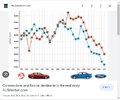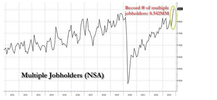- Joined
- 3 July 2009
- Posts
- 28,303
- Reactions
- 25,640
The problem is China is one of the only countries that makes enough steel to keep up with supply, so unless we re build our steel industry there is very little option.China is paying for oil in some countries with its own currency now, that's going to ruffle some feathers.
One thing I can vouch for in many ways is that the quality of China's manufacturing is under par, that's one thing the US and Europe have over them, even the Japanese made automotive stuff is well sought after than Chinese. I won't name the company but I put together the steel structure of one of the main gold miners in WA and they imported a heap of a structure fabricated in China, and my goodness the welds looked like they gave a welder to a 15 year old kid and let them rip.
The steel quality was a joke, when rectification work was needed you drilled holes in beams and the hardness of the steel varied dramatically, I very much doubt it even passed Australian standards. If you have a look at companies like Shimano all the high-end segment of gear (fishing and bikes) is still manufactured in Japan and it's done on purpose so that their manufacturing procedures and techniques aren't copied.
The only way we can re build our steel industry, is to encourage the mining companies to build the furnaces as we did in the 1960's, the only way they will do that, is if there is a market here to sell into. So it would take a carrot and a stick approach.
But that couldn't be done in isolation it would require a long term plan to change Australia's trajectory, which has been established over the last 50 years, when tariffs were actively reduced on third world junk.
The intention was honourable, which was to encourage investment in third world countries to enable them to modernise, the side benefit was the multinationals increased their profits by a huge amount.
The problem now is, how to stop ourselves becoming the third world countries.






